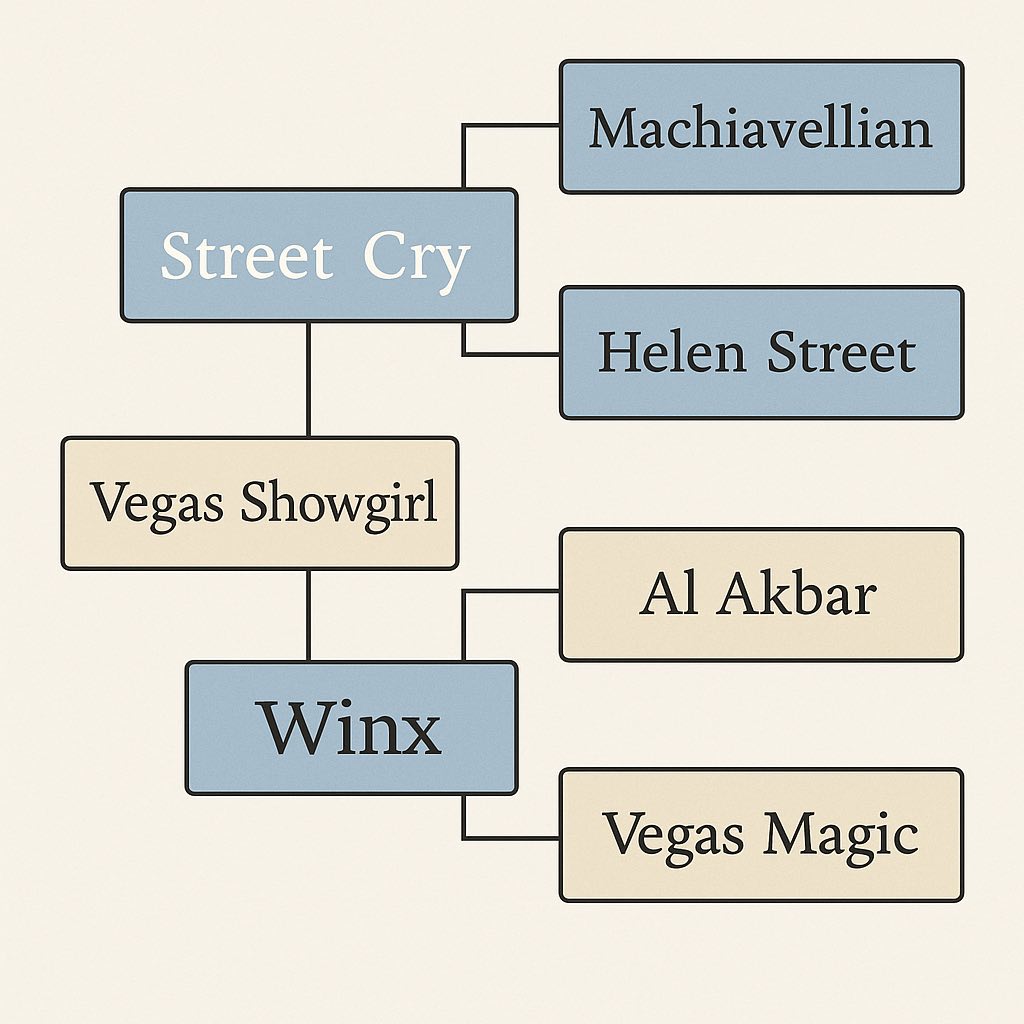Pedigree & Performance: Breeding Basics
Published on September 6, 2025
In horse racing, few topics spark as much debate as breeding. Punters, breeders, and trainers all know that horse pedigree Australia plays a massive role in determining future champions. Pedigree is more than just bloodlines — it’s a window into potential speed, stamina, and racing temperament.
Understanding a racing pedigree can help breeders make smarter pairings, punters place better bets, and racing fans appreciate the sport’s hidden science. In this article, we’ll break down the breeding basics — from sire lines to genetic traits, with real Aussie case studies of legendary racehorses like Winx and The Autumn Sun. For those new to racing lingo, our Horse Racing Glossary is a handy companion to keep nearby.
Sire Lines: The Backbone of Racing Pedigree
A horse’s sire line is often the first thing breeders study. The sire contributes half the genes, but historically, stallions tend to stamp their progeny with distinct traits.
- Northern Dancer Influence: One of the most dominant bloodlines in modern racing. His descendants excel on turf and dominate breeding barns worldwide.
- Danehill’s Australian Legacy: Imported to Australia, Danehill produced more than 300 stakes winners, embedding speed and versatility in local bloodlines.
- Street Cry’s Global Impact: Sire of Winx, Street Cry blended stamina with a competitive edge—traits seen in his progeny across multiple surfaces.
Quick Tip: When studying sire lines, look at siblings and half-siblings. If a sire consistently produces sprinters, expect that tendency to carry forward. You can even see these patterns in official form guides — learn how in our resource on How to Read a Horse Racing Form Guide.
Surface Preference: Turf, Dirt, or Synthetic?
Surface preference can often be traced back through pedigree.
- Turf Specialists: Redoute’s Choice offspring shine on turf, dominating Australian racing where grass tracks prevail.
- Dirt Performers: U.S. stallions like Tapit pass on dirt-track excellence, though their Aussie success is limited.
- Versatile Progeny: Some bloodlines adapt well across surfaces — giving punters an edge when betting internationally.
Pro punter’s story: Many Aussie punters learned during the Melbourne Cup that international turf pedigrees don’t always adapt well to Australia’s unique tracks. That’s why studying surface preference is vital before placing a bet. For a deeper dive into track effects, see our guide on Understanding Track Bias in Australian Racing.

Genes and the Science Behind Performance
Beyond pedigree charts, science has uncovered specific genes linked to performance:
- Speed Gene (Myostatin): Horses with the “C” variant excel at sprinting, while “T” variants favor endurance.
- Temperament Traits: Bloodlines often pass down competitive spirit — or lack thereof.
- Soundness and Durability: Families with fewer injuries produce longer-lasting racehorses.
Quick Stats: According to Racing NSW studies, horses with certain genetic markers show better consistency in Group races. Not sure about some of the terminology? Our Horse Racing Glossary breaks down key genetic and racing terms in plain English.

Case Studies: Aussie Champions with Pedigree Power
Winx: The Queen of the Turf
- Sire: Street Cry
- Dam Line: Northern Dancer influence
- Pedigree Edge: A blend of stamina and explosive acceleration
- Performance: 33 consecutive wins, proving that pedigree plus training equals greatness.

The Autumn Sun: A Redoute’s Choice Prodigy
- Sire: Redoute’s Choice
- Dam Line: Influenced by Galileo
- Pedigree Edge: Turf adaptability and middle-distance power
- Performance: Five-time Group 1 winner, retired early to stud, already passing on turf excellence.
Frequently Asked Questions (FAQs)
1. What is the difference between horse pedigree Australia and overseas pedigrees?
Australian pedigrees lean heavily on turf success, while U.S. pedigrees emphasize dirt-track stamina. For background on breeds and their specialisations, see Types of Horses – Popular Horse Breeds Explained.
2. How do I read a racing pedigree chart?
Start with the sire and dam, then trace back 3–4 generations to identify repeating influences like Northern Dancer.
3. Do genes guarantee success on the track?
Not always — training, environment, and even jockeys play huge roles. Pedigree increases probability, not certainty.
4. How long can a horse race before retiring?
It depends on durability, but typically horses can race for 8–10 years. Learn more in our guide: How long can a horse race?
5. Is pedigree more important for breeders or punters?
Breeders use it to plan matings. Punters use it to predict performance, especially in young horses.
6. What role do mares play in pedigree?
Dams contribute just as much as sires. “Blue Hen” mares have changed the course of racing history.
In Australian racing, pedigree is both art and science. A well-studied racing pedigree gives breeders the chance to create champions, punters an edge in betting, and fans a deeper appreciation of the sport.
Whether you’re fascinated by horse pedigree Australia, curious about sire lines, or simply looking to back the next champion, remember this: pedigree shapes possibility, but heart and training turn potential into victory.
Ready to learn more? Check out our guide on How long can a horse race? and explore how genetics influence racing careers.


